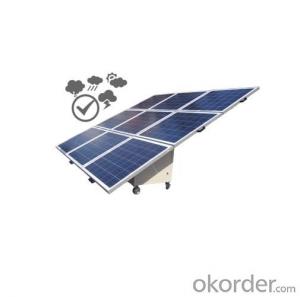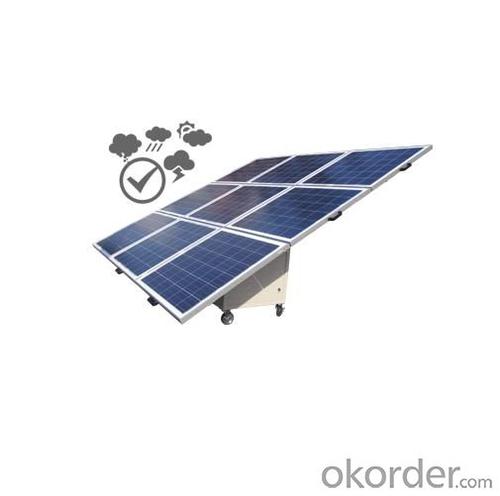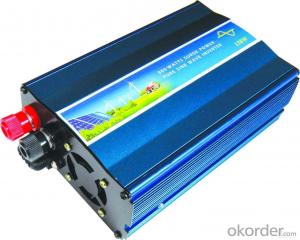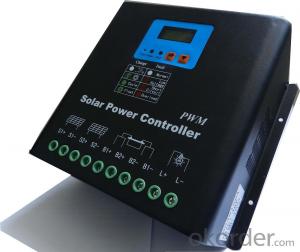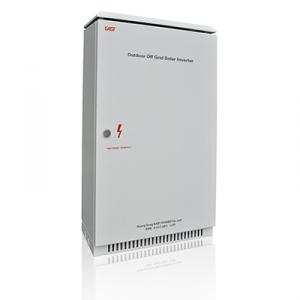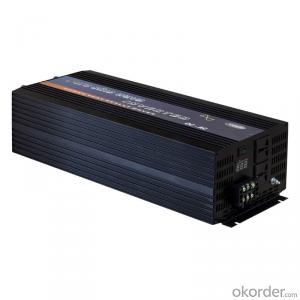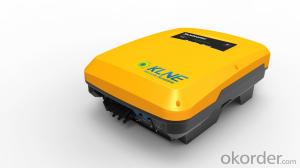5000 Watt Solar Inverter Off Grid Solar Car for Developing Area
- Loading Port:
- Shanghai
- Payment Terms:
- TT OR LC
- Min Order Qty:
- 1 pc
- Supply Capability:
- 3000 pc/month
OKorder Service Pledge
OKorder Financial Service
You Might Also Like
Off grid solar car suitable fore developping area
1.Futures
World's first, exclusively national-wide
Moveable, strong function in emergency
Huge Power output and world's top one
Self-Power generating, hard enduring
Large capacity, easy to use
Simple operation, low maintenance
Reliable quality, long lifetime
Remote monitoring, real-time data logging
2. datasheet
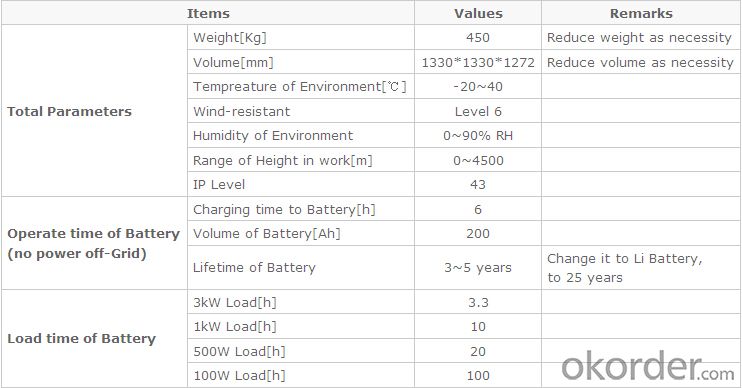
3. product certificate
EN 61000
VDE 0126-1-1
C10/11
G83/2
UTE C15-712-1
AS4777
CQC
CE10-21
EN50438
4. product outloot
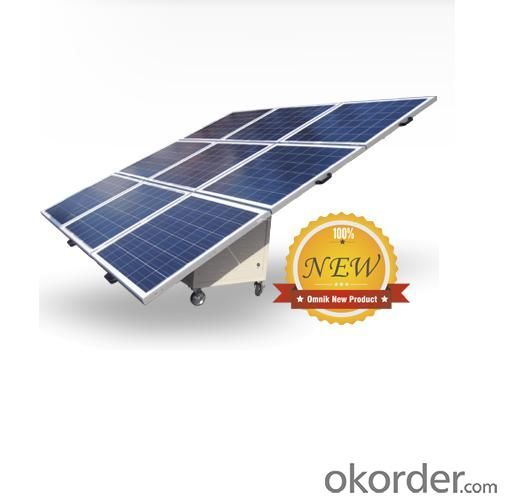
FAQ
1. What price for each watt?
It depends on the efficiency of the solar cell, quantity, and delivery date and payment terms.
2. How long can we receive the product after purchase?
In the purchase of product within three working days, We will arrange the factory delivery as soon as possible. The pacific time of receiving is related to the state and position of customers. Commonly 7 to 10 working days can be served.
We can provide you not only the solar material but also the off grid solar system, we can also provide you service with on grid plant.
4. How do you pack your products?
We have rich experience on how to pack the solar cell to make sure the safety on shipment; we could use wooden box or pallet as buyer's preference.
5. Can you do OEM for us?
Yes, we can.
- Q: How do you calculate the efficiency of a solar inverter?
- The efficiency of a solar inverter can be calculated by dividing the output power of the inverter by the input power it receives from the solar panels. This ratio is then multiplied by 100 to express the efficiency as a percentage.
- Q: Can a solar inverter be used in standalone power systems?
- Yes, a solar inverter can be used in standalone power systems. Standalone power systems, also known as off-grid systems, are not connected to the traditional electrical grid. In such systems, solar inverters convert the direct current (DC) generated by solar panels into alternating current (AC) that can be used to power various electrical devices and appliances. The solar inverter is an essential component in standalone power systems as it enables the efficient utilization of solar energy for off-grid applications.
- Q: Can a solar inverter be used in standalone systems?
- Yes, a solar inverter can be used in standalone systems. Standalone systems, also known as off-grid systems, are not connected to the electrical grid and rely on alternative sources of power such as solar panels. Solar inverters are crucial in standalone systems as they convert the direct current (DC) produced by the solar panels into alternating current (AC) that is used to power household or commercial appliances.
- Q: What is the typical size and weight of a solar inverter?
- The typical size and weight of a solar inverter can vary depending on the capacity and type of the inverter. However, most residential solar inverters have dimensions ranging from around 12 x 8 x 5 inches and weigh between 20 to 40 pounds. Commercial or utility-scale inverters can be much larger and heavier, often weighing several hundred pounds and having larger dimensions.
- Q: Can a solar inverter be used in a hybrid solar system?
- Yes, a solar inverter can be used in a hybrid solar system. A hybrid solar system combines solar power with other sources of energy, such as batteries or a backup generator. The solar inverter is responsible for converting the DC electricity generated by the solar panels into AC electricity that can be used to power appliances and other electrical devices. In a hybrid system, the solar inverter works in conjunction with other components, such as a battery inverter or a grid tie inverter, to manage the flow of electricity between the solar panels, batteries, and the electrical grid.
- Q: Can a solar inverter be connected to a smartphone app for monitoring?
- Yes, a solar inverter can be connected to a smartphone app for monitoring. Many solar inverter manufacturers offer mobile apps that allow users to monitor and control their solar power systems remotely through their smartphones. These apps provide real-time data on energy production, system performance, and can also enable users to adjust settings and receive alerts or notifications related to their solar power system.
- Q: How does a microinverter differ from a string inverter?
- A microinverter is a type of solar inverter that is installed on each individual solar panel, whereas a string inverter is installed at a central location and is responsible for converting the electricity generated by multiple solar panels connected in series. The main difference lies in the level of control and optimization. A microinverter allows for independent operation and monitoring of each panel, maximizing energy production and minimizing the impact of shading or panel malfunctions. On the other hand, a string inverter offers cost-effectiveness and simplicity for smaller installations with unobstructed sunlight.
- Q: Can a solar inverter be used with solar-powered water purification systems?
- Yes, a solar inverter can be used with solar-powered water purification systems. A solar inverter is responsible for converting the direct current (DC) power generated by solar panels into the alternating current (AC) power required for most electrical devices. Since water purification systems often require AC power to operate, integrating a solar inverter allows the system to utilize the energy harnessed from solar panels efficiently.
- Q: Can a solar inverter be used with energy storage systems?
- Yes, a solar inverter can be used with energy storage systems. In fact, solar inverters are often used in conjunction with energy storage systems to convert the direct current (DC) energy generated by solar panels into alternating current (AC) energy for use in homes or businesses, while also charging and discharging energy from the storage system as needed. This allows for greater flexibility and efficiency in managing and utilizing solar energy.
- Q: How does a solar inverter handle voltage fluctuations during grid disturbances?
- A solar inverter handles voltage fluctuations during grid disturbances by continuously monitoring the grid voltage. When it detects a fluctuation or disturbance, it adjusts its own output voltage to match the grid's voltage. This ensures that the solar inverter remains synchronized with the grid and delivers stable electricity without causing any damage to the connected appliances or the grid itself.
Send your message to us
5000 Watt Solar Inverter Off Grid Solar Car for Developing Area
- Loading Port:
- Shanghai
- Payment Terms:
- TT OR LC
- Min Order Qty:
- 1 pc
- Supply Capability:
- 3000 pc/month
OKorder Service Pledge
OKorder Financial Service
Similar products
Hot products
Hot Searches
Related keywords
